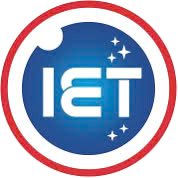Radar
The IET Vietnam is currently conducting and planning to execute several projects:
-
- Design and manufacture of coastal surveillance radars.
- Design and manufacture of portable radars for ground and sea surveillance.
- Design and manufacture of radars for naval artillery.
- Design and manufacture of weather radars for artillery forces.
- Design and manufacture of UAV SAR radars.
Electronic Warfare – EW
Electronic Warfare (Electromagnetic Warfare – EW) refers to military actions that involve the use of electromagnetic fields and directed energy to control the frequency spectrum or attack adversaries.
Electronic warfare encompasses military operations in the electromagnetic spectrum, including:
- Radio Communications: For the transmission and reception of information, data, commands, and battlefield control, enabling direct and continuous communication across various combat forces.
- Radar Reconnaissance: To detect and track enemy targets.
- Optical and Infrared Reconnaissance: Aimed at detecting, gathering intelligence, tracking, and analyzing targets.
- Satellite Reconnaissance and Communications.
- Lasers across the entire spectrum and high-power electromagnetic attacks: Used for jamming and destroying targets.
The effectiveness of these operations significantly impacts the battlefield outcome. Therefore, modern military forces strive to control the electromagnetic space, or frequency spectrum, through electronic warfare.
Electronic Warfare Characteristics:
- BENEFITS: Control over the electromagnetic spectrum provides a significant advantage in warfare.
- SCOPE: In modern warfare, electronic warfare spans six main domains: air, land, sea, space, cyberspace, and the electromagnetic field.
- TYPES:
- Electronic Attack (EA) or Electronic Countermeasures (ECM).
- Electronic Protection (EP) or Electronic Counter-Countermeasures (ECCM).
- Electronic Warfare Support (ES) or Electronic Support Measures (ESM).
C4I Systems
C4I stands for “Command, Control, Communications, Computers, and Intelligence.” C4I systems enable security and defense forces to gain situational awareness and share information from the soldier level to command levels. These systems:
- Quickly extract comprehensive intelligence.
- Promptly inform commanders of relevant matters.
- Share a common tactical picture.
- Support decision-making.
- Transmit commander’s orders.
- Coordinate operations day and night under all weather conditions.
- Maintain operational pace and proactively counter deception, camouflage, or enemy fire. C4I systems comprise key components, including central control software and integrated systems like radar, radio transmitters and receivers, intelligence systems, identification friend or foe (IFF) systems, combat control systems, tactical links, information warfare systems, satellite and space systems.
Cyber Security
Cyber warfare involves using cyberattacks against hostile nations, causing damage comparable to actual warfare and/or disrupting critical computer systems. Cyberspace is of utmost importance in modern warfare, and the side that controls cyberspace gains a significant advantage on the battlefield, making cyber security a top priority.
Common Cybersecurity Methods:
- Network Security: Protects network traffic by controlling inbound and outbound connections to prevent threats from infiltrating or spreading.
- Data Loss Prevention (DLP): Protects data by focusing on locating, classifying, and monitoring information at rest, in use, and in transit.
- Cloud Security: Provides protection for data used in cloud-based services and applications.
- Intrusion Detection Systems (IDS)/Intrusion Prevention Systems (IPS): Detect or prevent potentially hostile network activity.
- Identity and Access Management (IAM): Uses authentication services to limit and monitor employee access to protect internal systems from malicious entities.
- Encryption: The process of encoding data to render it unreadable, typically used during data transmission to prevent theft.
- Anti-virus/Anti-malware Solutions: Regularly scan computer systems for potential threats.
